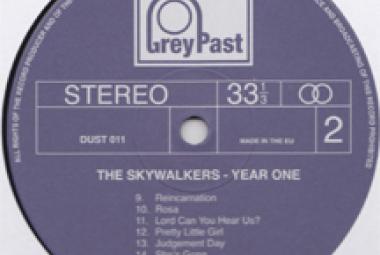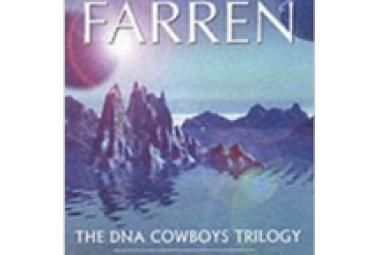Joan Baez (born January 9, 1941 as Joan Chandos Báez) is an American folk singer, songwriter, musician, and activist whose contemporary folk music often includes songs of protest or social justice. Baez has performed publicly for over 55 years, releasing over 30 albums. She is regarded as a folk singer, although her music has diversified since the counterculture days of the 1960s and now encompasses everything from folk rock and pop to country and gospel music. Although a songwriter herself, Baez is generally regarded as an interpreter of other composers’ work. In recent years, she has found success interpreting songs of modern songwriters such as Ryan Adams, Josh Ritter, Steve Earle, and Natalie Merchant. Her recordings include many topical songs and material dealing with social issues. She has displayed a lifelong commitment to political and social activism in the fields of nonviolence, civil rights, human rights and the environment. (More from Wikipedia)
On the following album, The Times They Are A-Changin’, the targets are even more diffuse. According to Joan Baez (speaking in the documentary No Direction Home), the genesis of “When the Ship Comes In” came from Bob Dylan’s own mistreatment at a hotel when a clerk refused to give him a room.
(May 2013)
* * *
“La Bamba” has been covered numerous times over the years; another Hispanic star, Trini Lopez had a 1966 hit with a more mellow version of the song, while Freddy Fender got on the charts with a Tex-Mex treatment. Folk artists like the Kingston Trio, Joan Baez and Harry Belafonte (among others) have also recorded the song. In one of their early sessions together, Mick Jagger and Keith Richards played “La Bamba” in 1961; ironically, they were both 17 years old, the same age as Ritchie Valens when he perished on the airplane crash. The tape of this rare recording brought $81,000.
(June 2013/1)
* * *
The first Bob Dylan album, Bob Dylan was released with great fanfare by Columbia Records in March 1962; it is a relatively conventional folk album that is not unlike those that Joan Baez, Judy Collins, and Peter, Paul and Mary were recording at the time, with just two original songs. The album was produced by John H. Hammond, the legendary talent scout who signed Bob Dylan to Columbia. Though excellent in every way – for instance, the album includes “Man of Constant Sorrow”, the song (as performed by the Soggy Bottom Boys, with George Clooney on lead vocals) that was made famous in the 2000 Coen Brothers film O Brother Where Art Thou – Bob Dylan sold just 5,000 copies initially; and Columbia Records executives began grumbling about Dylan’s being “Hammond’s folly”.
(June 2013/2)
* * *
In the early years, most women only sang; those who also played a musical instrument tended to be folksingers, like Joan Baez and Judy Collins. Later on, both Baez and Collins moved more toward rock, and they have each recorded numerous amazing albums. Joni Mitchell, who wrote Judy Collins’ early hit song “Both Sides Now”, stretched herself even further; one remarkable album that I own is her 1979 album, Mingus that was recorded with jazz legend Charles Mingus shortly before his death.
(October 2013)
* * *
I think of “Put Your Hand in the Hand” as the quintessential early Christian contemporary song. The best known version is by Ocean (from Canada), who reached #2 on the charts with the song in 1971; others who have recorded the song include Elvis Presley, Joan Baez, Frankie Laine, and Loretta Lynn.
A bit of serendipity occurred when Bob Dylan and Joan Baez appeared together at the 1963 Monterey Folk Festival singing a duet of a newly written song, “With God on Our Side” (which would appear on Dylan’s next album, The Times They Are A-Changin’). The Festival was in the same month as the release of The Freewheelin’ Bob Dylan. Wikipedia states: “Baez was at the pinnacle of her fame, having appeared on the cover of Time magazine the previous November. The performance not only gave Dylan and his songs a new prominence, it also marked the beginning of a romantic relationship between Baez and Dylan, the start of what Dylan biographer [Howard] Sounes termed ‘one of the most celebrated love affairs of the decade’.”
* * *
Mimi Fariña is Joan Baez’s younger sister, and Richard Fariña was originally known as a writer and eventually published an acclaimed novel, Been Down So Long It Looks Like Up to Me (1966). As quoted in Wikipedia, novelist Thomas Pynchon, who served as best man at the wedding of the Fariñas, described the novel as “coming on like the Hallelujah Chorus done by 200 kazoo players with perfect pitch . . . hilarious, chilling, sexy, profound, maniacal, beautiful, and outrageous all at the same time.”
* * *
After their marriage, Mimi and Richard Fariña began performing as a folk-rock duo that were much closer to the folk end of things than, say, the Byrds. Their first album was Celebrations for a Grey Day (1965). Their best known
songs are “Pack up Your Sorrows”, “Reno, Nevada”, and “Birmingham Sunday”. “Reno, Nevada” was one of the early songs performed by Fairport Convention (dating back to the time when Judy Dyble was the band’s lead singer). As recorded by Joan Baez, “Birmingham Sunday” became the theme song for the Spike Lee documentary film 4 Little Girls (1997) about the infamous 1963 church bombing that killed four young children.
(March 2015)
* * *
Wow, five years – now that’s something to celebrate.
But first a retrospective of the past year. Most satisfying no doubt was being able to write about the courageous Russian punk/protest band with the provocative name, Pussy Riot. How many Western bands and rock artists can say that they have been to jail for their art? Joan Baez maybe, but I think it was actually a husband of hers. I cannot remember its coming up even in the Civil Rights era.
Anyway, Pussy Riot had the goods on Vladimir Putin years before anyone in the West had figured out his true colors.
(Year 5 Review)















